New Life for an Old Waterbed
 Like many people, twenty or so years ago I bought a water bed. About six years ago, I unplugged the thing, drained and dismantled it, threw out the giant bladder, then stashed all the wood up in the rafters of the garage.
Like many people, twenty or so years ago I bought a water bed. About six years ago, I unplugged the thing, drained and dismantled it, threw out the giant bladder, then stashed all the wood up in the rafters of the garage.
This winter, I got to thinking about building a cold frame. So this noon, I went out in the garage to see what I had on hand and to prepare a list for the lumber yard. As I sifted through the rafters, I found the lumber from that old water bed. I also found an old storm door that I had been saving for a garage sale.
I pulled the stuff down, measured it up, and decided I had enough supplies on hand to make the cold frame without a run to the lumber yard.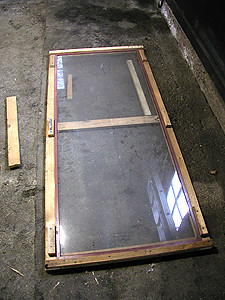 I called my friend Eric Doyle to see if he had any interest in spending a somewhat chilly Sunday afternoon puttering around in the garage. While he was on his way over, I got started. Thirty minutes later and I had the top door fully constructed. I made it so that the glass from the storm door could be removed to make it easy to move the cold frame without breaking the glass.
I called my friend Eric Doyle to see if he had any interest in spending a somewhat chilly Sunday afternoon puttering around in the garage. While he was on his way over, I got started. Thirty minutes later and I had the top door fully constructed. I made it so that the glass from the storm door could be removed to make it easy to move the cold frame without breaking the glass.
When Eric arrived, we set aside the door and began working on the frame itself.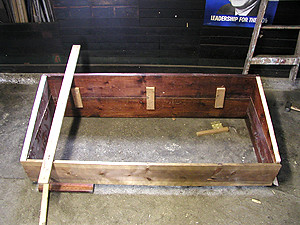 The first step was to join two boards together for the back of the cold frame. The back has to be higher than the front so that the frame collects maximum solar gain.
The first step was to join two boards together for the back of the cold frame. The back has to be higher than the front so that the frame collects maximum solar gain.
Then we built the sides. The sides had to be carefully cut so that the angle on both sides was the same.
The we fastened the whole box together. We laid the door on top, and it all sat together well, without too many gaps for the warm air to escape.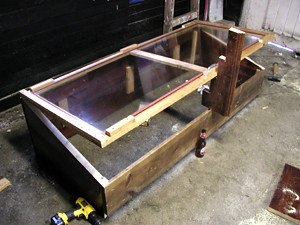 The biggest trick in building the cold frame was to get the hinges to work right. We tried three different approaches before getting them installed to work as needed.
The biggest trick in building the cold frame was to get the hinges to work right. We tried three different approaches before getting them installed to work as needed.
I was glad that I also had a nice assortment of screws, two hefty hinges, and a nice door handle kicking around in the cabinet in the garage. Saving all these leftovers or salvage materials from previous projects saved me a trip to the hardware store.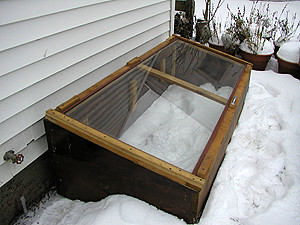 After washing the glass, we moved the frame to its new home along the south side of our house on top of our oldest raised bed. The white siding of the house behind the frame will certainly help make this a bright spot for starting seedlings.
After washing the glass, we moved the frame to its new home along the south side of our house on top of our oldest raised bed. The white siding of the house behind the frame will certainly help make this a bright spot for starting seedlings.
The frame is portable, so we can move it out of the garden in the summer, or use it to shade lettuce from the heat, and then place it over late crops to extend our fall growing season. Now I'm eager for a few sunny days to melt out the snow inside and for my 2007 seed order to arrive.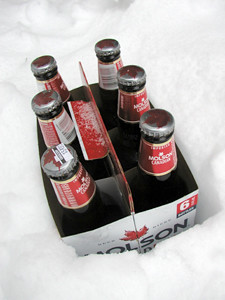 When we were done, all that was left from that old water bed, besides a new cold frame, were four or five small pieces of lumber less than a foot in length and a bunch of saw dust. Overall, this was a productive project for recycling useless junk into something of value.
When we were done, all that was left from that old water bed, besides a new cold frame, were four or five small pieces of lumber less than a foot in length and a bunch of saw dust. Overall, this was a productive project for recycling useless junk into something of value.
I guess there was a little cost to the project. While waiting for Eric to arrive, I ran to the store and grabbed a six pack. So the total cost of the project was $5.49 plus tax and bottle deposit.





















1 comment:
How come when I want to do stuff to use up some of the old junk in the garage, the boards are always less than 12" too short, the screws are the wrong size, usually 1/4" too short and there isn't enough paint in one of the cans to do it in the color that I want? Hence, the garage is filling up with junk. Anybody need 1/2 gallon of black sash & trim paint???
Post a Comment